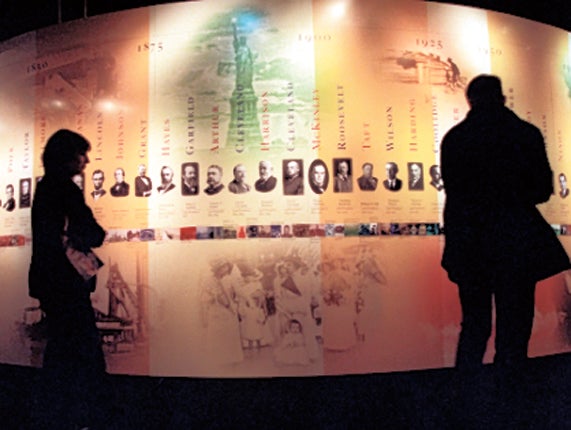The shelf preservation society: How do you ensure precious records and family photos are stored safely?

Your support helps us to tell the story
From reproductive rights to climate change to Big Tech, The Independent is on the ground when the story is developing. Whether it's investigating the financials of Elon Musk's pro-Trump PAC or producing our latest documentary, 'The A Word', which shines a light on the American women fighting for reproductive rights, we know how important it is to parse out the facts from the messaging.
At such a critical moment in US history, we need reporters on the ground. Your donation allows us to keep sending journalists to speak to both sides of the story.
The Independent is trusted by Americans across the entire political spectrum. And unlike many other quality news outlets, we choose not to lock Americans out of our reporting and analysis with paywalls. We believe quality journalism should be available to everyone, paid for by those who can afford it.
Your support makes all the difference.Have you noticed your valued documents and photographs showing signs of ageing? Organisations such as the Smithsonian Institution, which has thousands of important historical papers and photos in its collection, have to store their pieces with utmost care. As part of American Archives Month, the Smithsonian Institution Archives experts have shared some of their tips on how to look after precious personal records and pictures...
To remove photos from an old tattered album, first make sure you have noted down any inscriptions you have written next to the pictures. Wearing gloves, put weights down, then use a micro-spatula or Teflon dental floss and gently work it under the photo without lifting it.
To separate two photos stuck together, don't use water as this softens the image coatings and the image itself as well as separating layers in each photo. If these are very precious, you should consider contacting a photo conservator.
The best way to store old photos is either with a new album or to organise them in envelopes. Alternatively, get clear sleeves that wrap around the photo. Supplies should be made only of photo-safe components of plastics (polythene or polypropylene) or acid and lignin-free paper. Never apply adhesive directly to a photo.
For storing family documents, such as birth and marriage certificates, choose an envelope made of the materials mentioned above. If you choose plastic, make sure you get a document holder that has a piece of paper or acid/lignin-free insert for behind the certificate, which will give some support to the fragile document and also absorb acid.
Digitise items by either scanning them (if they are up to it) or taking photos of them if they are frail. Save the digital images on to a computer and keep the images on external media such as an external hard drive. Don't rely on a photo-sharing service online.
If you scan documents, you should use a resolution of no less than 600 ppi to yield a minimum of 6,000 pixels along the long axis. Colour should be saved as 24-bit Tiff and greyscale saved as 8-bit Tiff. It's best to use Tiff as it is a lossless format, while Jpeg experiences a loss in quality when items are edited. Save the documents as PDFs.
For mouldy documents you want to scan, if the material is dry and not smeared or smelly, then it is probably dormant. Lay out the document on clean unprinted newsprint and gently wipe them with cotton balls on both sides. Avoid if the writing or drawing is in soft pencil or charcoal. Clean the scanner after use.
With old 35mm film that you are thinking of having professionally converted to DVD, be gentle with the film. Don't try to project it until you know more about it because film can become brittle and shrunken and will not fit sprocket holes. Wear gloves and try to unreel a little bit of the film to see if you can make out anything more significant. It should be kept flat on a surface.
Join our commenting forum
Join thought-provoking conversations, follow other Independent readers and see their replies
Comments